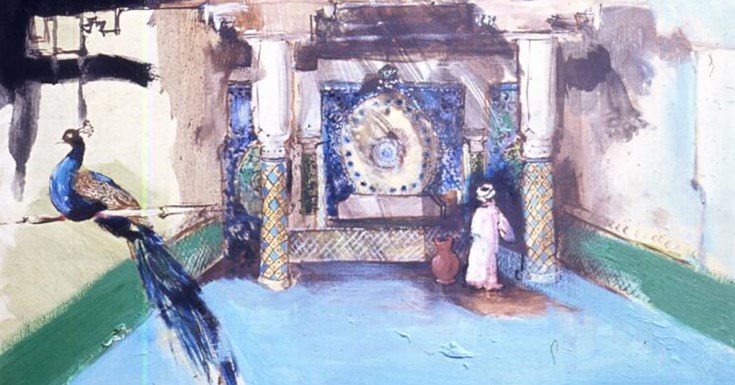- Home
- Schools
- Composing
- Composing to Pictures
- Asian Courtyard KS 3/4
Asian Courtyard KS 3/4
Here, we are presented with a courtyard from the middle east perhaps.
There are four pillars, a peacock, 3 walls (you are looking through the 4th wall into the courtyard), a blue floor (possibly rain - given that the courtyard would be open to the elements), a gong or throne/shrine, a water carrier (or some-such) in traditional dress.
In this example, we going to interpret the painting in a more abstract way, using the four pillars as our guide, and thinking about the way music is built
Using any of the elements of the picture, we can assign each to one of the four pillars.
Thinking back to the Threshing machine and the use of repetition, here we are focussing on any one of the pillars (preferably the one with what you think has the best music!)
Your piece will go like this: Pillar 1 (your best bit), pillar 2, then pillar 1 again. Pillar 3 comes next followed by 1 again. The piece ends with pillar 4 and finally pillar 1 again to finish.
Why so many pillar 1's? Well, as a species (you are human right?!) we like familiarity, so presenting the music for pillar 1 first will establish that in your listeners mind. Returning to it throughout your piece offers a sense of comfort in between all the other 'new' pillar musics.
This way of presenting music is called a Rondo - where one theme returns again and again. Here's a very famous Rondo. Count how many times the main tune (the one you hear at the start) occurs
Thinking back now to the London/Thames picture, we used open chords to represent the cold. Here we can use special scales (note patterns) to infer music from the middle east. This scale is the Harmonic Minor scale. Click here to have a listen
Using these minor notes in addition to the 4 pillars idea further strengthens the relationship of your music to the picture

